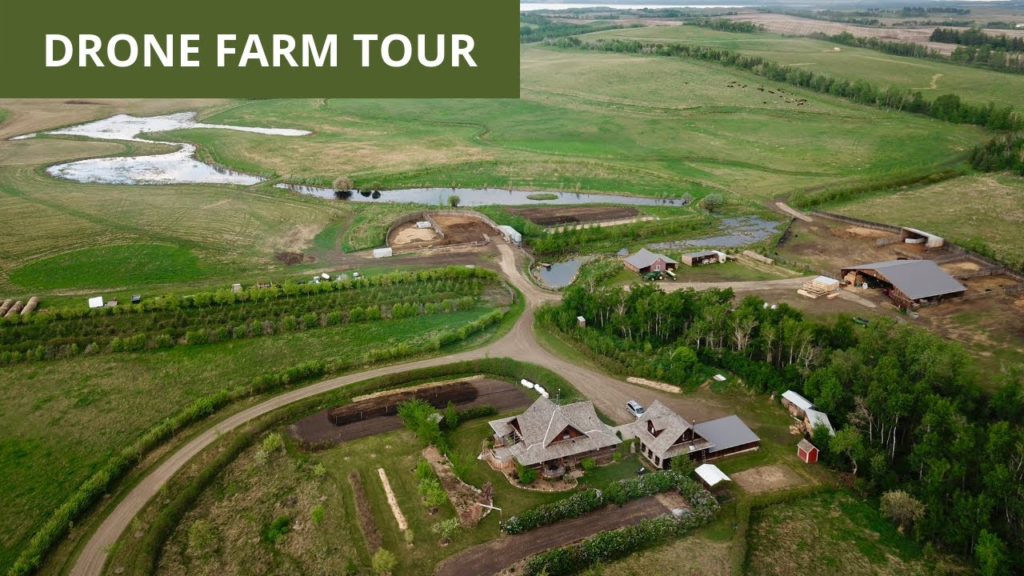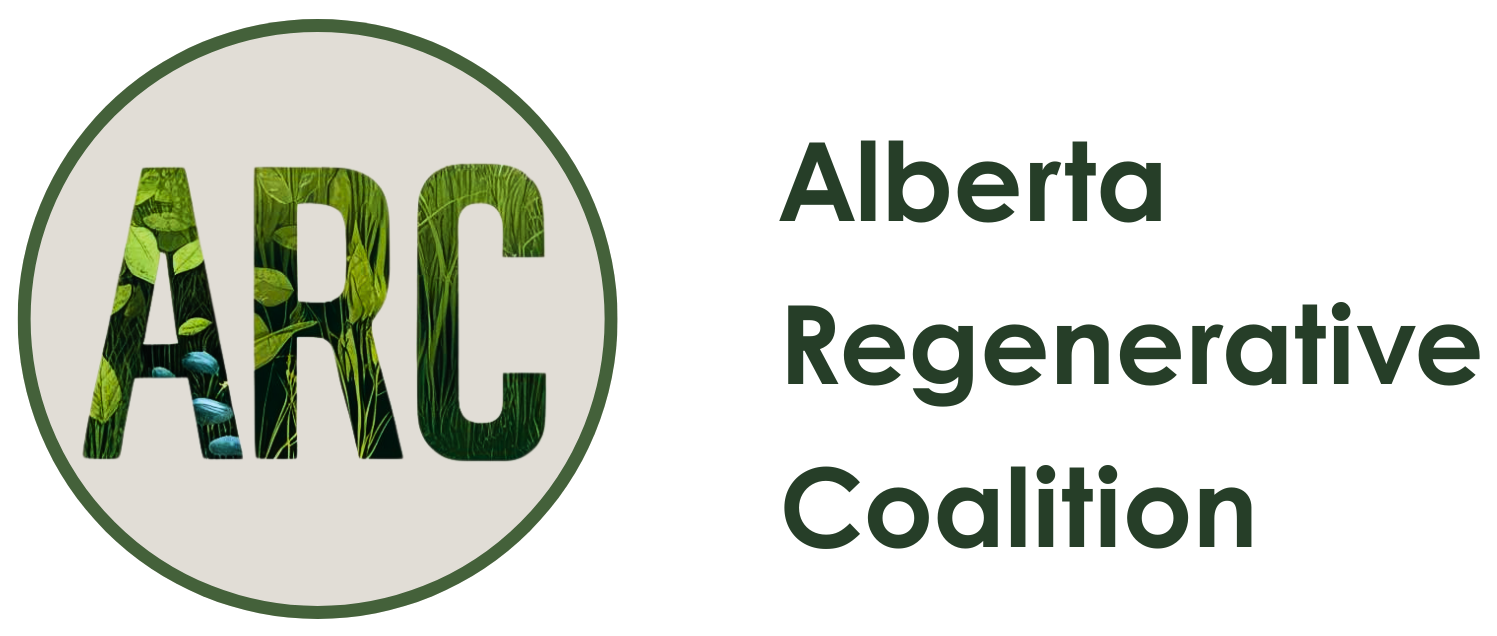
Nestled in Ferintosh, Alberta, Coen Farm is a 250-acre regenerative farm that exemplifies sustainable agriculture by working with nature, not against it. Founded in 1988, the farm has moved away from chemical-based farming, prioritizing closed-loop systems, biodiversity, and ecosystem health. By integrating permaculture principles, rotational grazing, and organic farming, Coen Farm demonstrates that agriculture can regenerate the environment while producing high-quality food.
But what makes Coen Farm truly regenerative? Let’s break it down using the ARC Criteria—a framework assessing how a project restores, sustains, and enhances ecological and social systems.
INTERVIEW

Video

ARC Criteria: Why Coen Farm is a Regenerative Model
1️⃣ Co-Evolution Feedback Loop / Co-Evolving Mutualism
🔄 Rotational Grazing & Soil Regeneration
Feedback Mechanism: Observing how livestock movement affects soil health and grass regrowth.
Adaptation: Adjusting grazing schedules when an area becomes overgrazed to allow the land to recover before reintroducing livestock.
Long-Term Effect: Improved soil fertility, microbial activity, and biodiversity, making the ecosystem more resilient over time.
🌿 Aquaculture & Duckweed System
Feedback Mechanism: Noticing that livestock waste runoff affects water quality.
Adaptation: Growing duckweed in ponds to absorb nitrogen and phosphorus, cleaning the water.
Long-Term Effect: Duckweed is harvested as high-protein feed for livestock, creating a closed-loop nutrient cycle.
🌸 Biodiversity & Native Plant Integration
Feedback Mechanism: Tracking pollinator activity and plant health over seasons.
Adaptation: Introducing more native plants to support soil stability and attract beneficial insects.
Long-Term Effect: A self-sustaining ecosystem that adapts while enhancing agricultural productivity.
👥 Community Teaching & Knowledge Sharing
Feedback Mechanism: Conducting workshops and tracking how participants apply regenerative techniques.
Adaptation: Expanding education efforts based on community input and success stories.
Long-Term Effect: Widespread adoption of regenerative farming, benefiting both people and the environment.
2️⃣ Enhancing Biodiversity
🌾 Polyculture Farming
Over 40 varieties of fruit, nut, and berry trees, alongside staple crops like potatoes, carrots, and onions.
Diverse plant and animal interactions naturally enrich soil and improve pest resistance.
🐝 Native Plant Integration
Saskatoons, cranberries, haskaps, gooseberries support local pollinators, insects, and birds.
Helps restore ecological balance while reducing dependence on synthetic fertilizers.
🐄 Diverse Livestock
Grass-fed cattle, milk-fed pigs, free-range chickens, and ducks contribute to natural manure distribution, regenerating soil health.
3️⃣ Regenerative Practices
♻️ Hub-and-Spoke Grazing System
Livestock rotate between pastures, forests, and wetlands, preventing overgrazing and fertilizing the soil naturally.
🌊 Aquaculture & Nutrient Recycling
Duckweed absorbs nitrogen and phosphorus, reducing water pollution while serving as high-protein animal feed.
🥛 Sustainable Dairy Practices
Cows are milked for only six months before a rest period, ensuring healthier livestock and nutrient-rich milk.
4️⃣ Sense of Place
🌲 Honoring the Aspen Parkland Biome
Integrates forests, wetlands, and native prairies instead of clearing land for standardized fields.
🌾 Traditional & Indigenous Land Management
Inspired by holistic grazing and ecosystem-based farming methods used for centuries.
👥 Community-Based Farming Model
Engages local farmers, educators, and consumers to ensure regenerative knowledge is preserved and shared.
5️⃣ Adaptive and Resilient Development
🌦 Climate-Adaptive Farming
Adjusts grazing schedules, crop selection, and water use based on weather patterns.
🌾 Diversified Resources
Reduces dependence on industrial feed and synthetic fertilizers by integrating grains, aquaculture, and native forage plants.
🔄 Self-Sufficient Operations
Minimizes reliance on external inputs by producing on-site compost, manure, and organic soil amendments.
6️⃣ Ethical Sourcing
🌱 Sustainable Soil Enrichment
No synthetic fertilizers or pesticides—soil is regenerated using compost, manure, and natural cover crops.
🌾 Local & Organic Inputs
Grains are grown on-site or sourced from nearby organic farmers, supporting local economies.
🐄 Animal Welfare & Ethical Treatment
Livestock are pasture-raised, avoiding stressful and unethical factory farm conditions.
7️⃣ Holistic Wealth and Capital
🤝 Social Capital
Hosts educational programs for farmers, students, and communities.
🌍 Ecological Capital
Improves soil health, restores biodiversity, and enhances carbon sequestration.
🏗 Infrastructure Capital
Built a resilient hub-and-spoke system to optimize land use and natural grazing efficiency.
👨🌾 Human Capital
Empowers people to engage in ethical, sustainable food production.
💰 Financial Sustainability
Maintains a diverse business model: direct-to-consumer sales, farm tours, consulting, and book publishing.
8️⃣ Stakeholder Guild
👥 Community & Farmer Collaboration
Works with local farmers, schools, and organizations to spread regenerative practices.
🌾 Consumer Connection
Encourages direct relationships between farmers and customers through CSA programs, farm tours, and online engagement.
🔗 Regenerative Network Growth
Builds long-term relationships with stakeholders rather than focusing on one-time transactions.
Conclusion: A Blueprint for the Future
Coen Farm is a leading example of regenerative agriculture, proving that nature-based solutions can heal the planet. By embracing ARC-compliant regenerative criteria, Coen Farm demonstrates how sustainability can be scalable, adaptable, and beneficial for both people and the environment.
📍 Visit Coen Farm’s website to learn more about their regenerative farming practices, products, and workshops.
( Zharee Ramirez)
